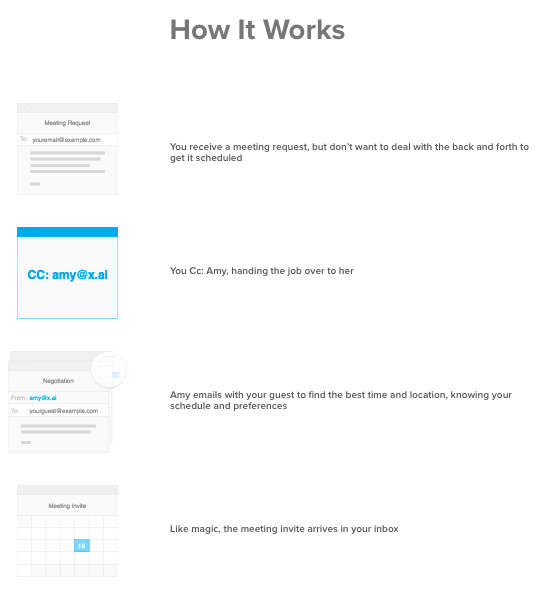Bots for Business: How Chatbots and AI are Changing the Business Landscape
Your business might be making its first AI hire sooner than you think. If recent moves made by market leaders are any indication, bots are the future of business.
Think of challenges that your business has recently faced — how many were due to a miscommunication or lack of communication altogether? Now, think of a time when you wanted a simple question answered and had to wait on hold for what seemed like a lifetime. There has to be a better way, right?
The answer to that conundrum, many businesses are finding, is bots.
Bot or Not?
Everyone has experienced the frustration of a convoluted automatic phone system (hello, Time Warner Cable) when a short conversation with a human customer service rep would have solved the problem in half the time and agony. In light of the current inefficiencies surrounding even the simplest of bots, one begs the question: how useful will bots really be in the future?
It’s usually pretty easy to tell whether you’re interacting with a real-life person or a computer, and the awkward interactions that ensue when bots aren’t sure how to respond can be far more alienating to human customers than the normal frustrations of bad (human) customer service. To take this one step further, the uncanny valley phenomenon crosses the line from frustrating to downright creepy when it comes to poorly designed AI.

Luckily, when communicating via text, bots are at less of a disadvantage. They don’t have to worry about non-verbal cues; and written commands are simpler to analyze and respond to than verbal communication. It also helps when there’s a clear definition between the job of a human and bot – no one necessarily thinks of Siri as a person, despite her very soothing voice, and she’s still very popular despite her less-than-human capabilities: a survey of iPhone users showed that 87% used virtual PA Siri at least once a month.
Currently, bots are best used to automate simple and predictable commands. Where they fall short is actually replacing the multi-tasking and problem solving capabilities of a human customer service rep. In short, Time Warner Cable’s phone system is far from passing the Turing Test, and until it does, call centers can continue operations for a few more years at least.
Let’s Chat About WeChat

In China, successful bot adoption in real life is well under way. While the Chinese messaging and lifestye app, WeChat, is relatively unknown in the Anglosphere, its 570 million users use the app’s well-developed bot interface for everything from splitting dinner bills and buying the latest Nikes, to booking doctor’s appointments and chatting with friends.
Ever keen to stay in the vanguard of development (and certainly hoping to replicate WeChat’s market penetration) Facebook is copying WeChat’s proven chatbot enhanced features — and this strategy seems set to be a winner for businesses, users, and, of course, Facebook itself.
After only one month, Facebook’s Messenger Platform already had “tens of thousands” of businesses using the service to create their own chatbots, and considering the benefits, it’s easy to see why.
Generation Bot
While bots may not entirely replace customer service reps anytime soon, Facebook’s Messenger Platform shows how chatbots stand to be important additions to the business models of power players and small businesses alike, with a particular interest shown by startups.
For example, X.ai showcases the ability of AI to save human workers time by scanning emails and using information to set up meetings. The seed idea came when developer Dennis Mortenson realized he had had 1019 meetings that year, 672 of which had needed to be rescheduled. By swapping calendars with future cofounder Alex Poon, it became clear that meetings could be set up without a complex understanding of personal preferences, and could potentially be outsourced to a well-designed chatbot. Hours of development later, The Poon-Mortenson bot is receiving glowing early reviews and has even been asked on more than a few dates.

It’s their “ability to learn” that makes bots (or “intelligent agents”) so exciting. Bots work a lot like living things, in that they’re autonomous systems that are able to observe their environment and act on it. But being able to assess its surroundings does not define a bot — the “intelligent” bit comes when these systems are coded with the ability to learn and self-upgrade. As sensors become more sophisticated and widespread, and machine-learning systems are further developed, bots’ reactions to inputs will become increasingly nuanced and accurate.
Skynet might be a long way off, but we’re already in a world where artificial intelligence is starting to be part of the wallpaper. The huge potential and likely ubiquity of this technology means that smart entrepreneurs are piling into the sector, luring investors with their potential future earnings: already, it seems fairly likely that the early adopters of AI technology now will one day dominate the economy.
Given what��s already been accomplished with the technology still in an early state, and considering the self-upgrading capability of machine learning systems, the possibilities of bots may indeed be limitless.
Related Insights
We’re looking forward to working with you, too.
Start conquering the digital terrain today.





